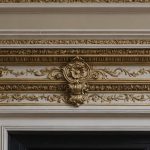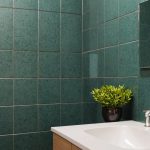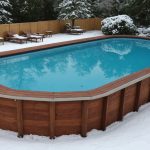Are your stone-built cottage windows letting in more cold than you’d like? Heat loss can be a significant issue, particularly in the UK’s chillier months. Fortunately, several effective strategies exist to tackle this problem head-on. From innovative insulation techniques to simple maintenance tips, discover practical solutions that not only enhance comfort but also improve energy efficiency. Embrace the charm of your cottage while ensuring a warm and welcoming home.
Understanding Heat Loss in Stone-Built Cottages
Stone-built cottages, with their charming aesthetics, often face significant challenges when it comes to heat loss. The thick stone walls, while durable, can lead to substantial energy inefficiency if not properly managed. This inefficiency is especially pronounced in colder climates, where maintaining a warm interior becomes crucial.
One of the primary contributors to heat loss in these cottages is the windows. Older windows, common in such structures, may lack proper insulation, allowing warm air to escape and cold air to seep in. This can drastically affect the overall energy efficiency of the home. Cracks around window frames or single-glazed panes are often culprits, leading to increased heating demands.
To combat these issues, enhancing energy efficiency is vital. This can involve upgrading to double-glazed windows, which provide better insulation by trapping air between two panes of glass. Additionally, sealing gaps around window frames with weather stripping or caulking can significantly reduce heat loss.
In colder climates, the importance of energy efficiency in stone-built cottages cannot be overstated. By addressing these heat loss factors, homeowners can not only ensure a more comfortable living environment but also reduce energy costs. Emphasizing proper insulation and window upgrades can make a notable difference in preserving warmth within these historic homes.
Insulation Techniques for Cottage Windows
Improving window insulation in stone-built cottages is crucial for enhancing energy efficiency. Various thermal barriers can be employed to minimise heat loss through windows, ensuring a more comfortable and cost-effective living environment.
Types of Insulation Materials Suitable for Windows
Several materials are effective for insulating windows. Weather stripping is a popular choice, providing a seal to prevent air leaks. Foam tape is another option, offering flexibility and ease of installation. For more robust insulation, thermal curtains or blinds can be used; they not only block drafts but also add a layer of warmth.
Installation Techniques for Effective Insulation
Proper installation of insulation materials is key to their effectiveness. When using weather stripping, ensure it covers the entire perimeter of the window frame. Foam tape should be applied to the sash and meeting rails to prevent air infiltration. For thermal curtains, ensure they extend beyond the window frame and reach the floor to maximise coverage.
Benefits of Secondary Glazing and Storm Windows
Secondary glazing involves adding a second pane of glass inside the existing window, creating an air gap that acts as an insulator. Storm windows are another energy-saving solution, providing an additional barrier against the elements. Both options significantly reduce heat transfer, improving the overall thermal performance of cottage windows.
Window Treatments to Enhance Efficiency
When it comes to improving the energy efficiency of stone-built cottages, effective window treatments play a crucial role. These treatments not only add aesthetic value but also significantly reduce heat loss, making homes more comfortable and energy-efficient.
Overview of Different Window Treatment Options
Several options are available for homeowners seeking to enhance their cottage's insulation. Thermal curtains are a popular choice, known for their ability to trap heat inside while blocking drafts. These curtains often feature multiple layers, including a thermal lining that acts as an additional barrier against the cold.
Another viable option is energy-efficient blinds or shades. These treatments are designed to minimise heat transfer through windows, using materials that reflect heat back into the room. Cellular shades, for instance, have a honeycomb structure that traps air, providing excellent insulation.
Benefits of Thermal Curtains and Energy-Efficient Blinds
Thermal curtains can reduce heat loss by up to 25%, making them an effective solution for maintaining warmth. They also offer soundproofing benefits, creating a quieter indoor environment. On the other hand, energy-efficient blinds can significantly lower heating costs by preventing heat from escaping through windows. Their versatility allows them to be adjusted for optimal light and heat control, enhancing the overall comfort of a home.
Maintenance Tips for Stone-Built Cottage Windows
Proper window maintenance is essential to enhance the energy efficiency of stone-built cottages. Regular upkeep can prevent significant heat loss, ensuring a more comfortable and cost-effective living environment.
Regular Maintenance Practices
To maintain optimal energy efficiency, homeowners should regularly inspect their windows. Look for signs of wear and tear, such as peeling paint or damaged frames, which can compromise insulation. Regular cleaning is also crucial, as dirt and debris can hinder the performance of seals and weather stripping.
Importance of Sealing Gaps and Cracks
Identifying and sealing any gaps or cracks around windows is vital. These openings allow warm air to escape and cold air to penetrate, increasing heating demands. Using caulk or expanding foam, homeowners can effectively seal these gaps, enhancing insulation and reducing energy costs.
Checking and Replacing Weather Stripping
Weather stripping plays a critical role in window maintenance. Over time, it can become brittle or worn, leading to air leaks. Regularly check the condition of weather stripping and replace it if necessary. Ensure it forms a tight seal around the window frame to prevent drafts and improve thermal performance. By maintaining these elements, homeowners can significantly increase their cottage's energy efficiency.
Cost-Effective Solutions for Homeowners
Addressing heat loss in stone-built cottages doesn't have to break the bank. Homeowners can explore cost-effective strategies to improve insulation and energy efficiency. Implementing DIY solutions is a practical approach, allowing individuals to enhance their home's thermal performance without incurring high costs.
For those inclined towards DIY options, several methods can be employed to insulate windows effectively. Using weather stripping and foam tape are simple yet efficient ways to seal gaps and prevent drafts. These materials are affordable and easy to apply, making them perfect for budget-conscious homeowners. Additionally, installing thermal curtains can further reduce heat loss, as they provide an extra layer of insulation.
Beyond DIY efforts, homeowners can explore energy grants and incentives available in the UK. These programs aim to assist with the costs of improving energy efficiency. The Energy Company Obligation (ECO), for instance, offers funding to eligible households for insulation and heating improvements. Similarly, the Green Homes Grant provides vouchers for energy-saving home improvements, easing the financial burden for homeowners.
By leveraging these cost-effective strategies and available incentives, homeowners can significantly enhance their cottage's energy efficiency, ensuring a warmer and more sustainable living environment.
Case Studies and Visual Aids
Exploring case studies and visual aids can significantly enhance understanding of insulation techniques in stone-built cottages. They provide practical examples, showcasing the tangible benefits of energy efficiency improvements.
Presentation of Successful Case Studies
One notable example involves a cottage in the Scottish Highlands. Initially plagued by high heating costs, the homeowners implemented a series of insulation upgrades, including double-glazed windows and thermal curtains. As a result, they experienced a 30% reduction in energy bills. This case study illustrates the effectiveness of targeted interventions in improving thermal performance.
Visual Aids to Demonstrate Insulation Techniques
Visual aids, such as diagrams and photos, are invaluable for illustrating insulation techniques. They offer a clear view of how materials like weather stripping and foam tape are applied to windows. By seeing these methods in action, homeowners can better understand the steps involved and the potential impact on their own properties.
Before and After Comparisons of Energy Efficiency Improvements
Before and after comparisons provide compelling evidence of the benefits of insulation. Images showing a cottage's energy consumption before and after upgrades can highlight the significant improvements in efficiency. Such visual representations help to convey the practical advantages of investing in energy-saving measures, encouraging more homeowners to follow suit.
















